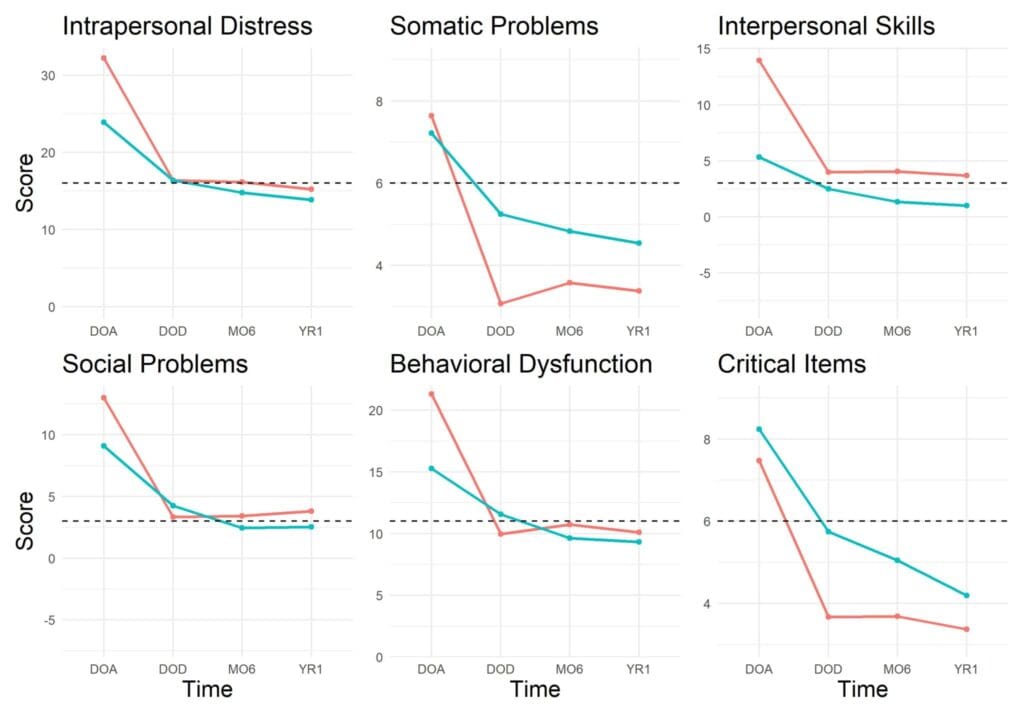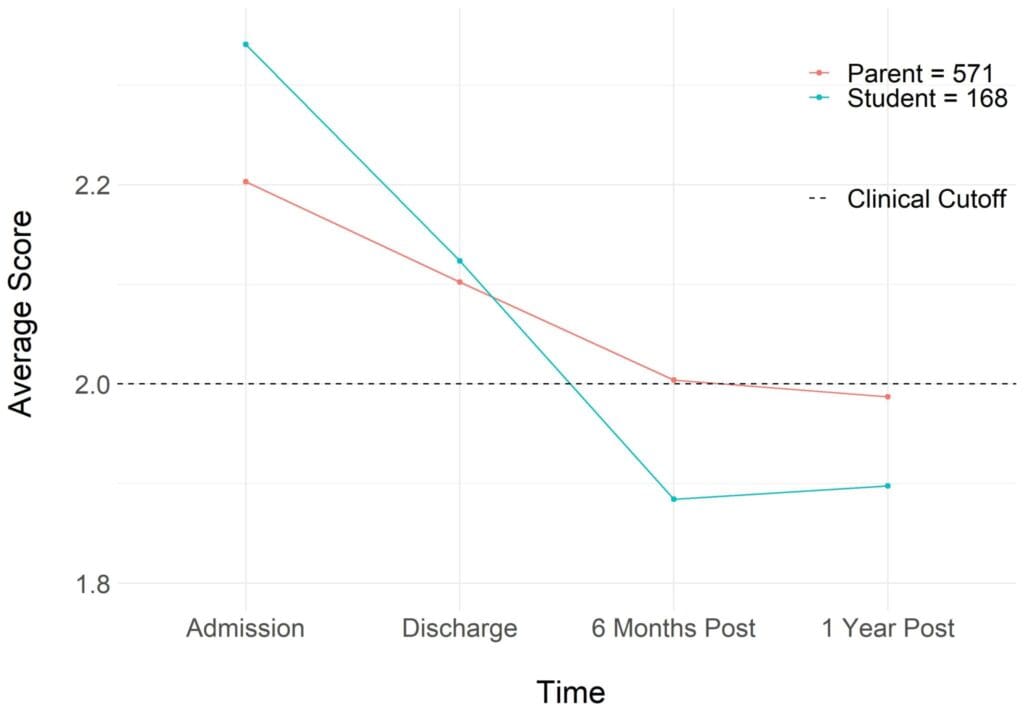All participants at Elements are asked to complete three questionnaires during their stay and then again six months and one year post discharge. Elements is a member of the OBH Council which participates in the NATSAP PRN (National Association of Therapeutic Schools and Programs, Practice Research Network) study. These results are stored in a client’s profile and are able to be accessed if they move on to another program, through the Golden Thread.
The Youth Outcomes Questionnaire (YOQ) is a standardized clinical outcome instrument to measure treatment progress in youth populations receiving mental health intervention developed by OQ Measures.1
The YOQ has been determined to be a clinically relevant, valid and reliable self-report measure of psychosocial distress and behavior dysfunction.2 At the individual level, standardized instruments such as the YOQ provide objective and quantitative feedback and supplement a clinician’s impressions of progress.3 At a broader level, utilizing these instruments enables mental health programs to assess their programmatic success and trends in order to provide their clients with the highest level of care possible. For these reasons, Elements administers the YOQ to its clients upon intake, at discharge, six months post discharge, and one year post discharge. Elements also administers this instrument to parents of the clients at each of those instances, with parents being instructed to fill out the questionnaire reflecting on their child.
The YOQ provides six subscale scores as well as an aggregated “Total” score. A clinical cutoff has been calculated by OQ measures for each subscale as well as the total score and is shown on the graphs as a dashed horizontal line. This clinical cutoff indicates the point at which an individual is experiencing mental health functioning that is in need of a clinical intervention. If a client self-reports a score of 47 or above, they are considered to be in need of treatment while if they report a score below 47, they are considered to be in the “normative range” and treatment is not needed. For more information on these measures, see the OQ Measures website for more information on both the student self report questionnaire (Y-OQ SR 2.0) as well as the parent report questionnaire (Y-OQ 2.01). The following graphic shows the aggregated mean total scores of participants at Elements. As you can see, both parents as well as students on average report arriving to the program well above the clinical cutoff and discharge below the cutoff in the normative range. Further, this positive impact is shown to be sustained for a year post-discharge.

The following graphic depicts the YOQ subscale scores from parents/guardians and students who attended Elements Wilderness Program. The graphs show marked improvement for each of the subscores often with both parents and students reporting sustained scores below the clinical cutoff. Note: “Instance” indicates at which time point the scores were recorded at: day of admission (DOA), day of discharge (DOD), six months post discharge (MO6), and one year post-discharge (YR1).

The six factors measured by the YOQ encompass the various issues adolescents struggle with.3 These factors are:
The Family Assessment Device (FAD) gives a measure of an individual’s perception of family dynamics. It is based on the McMaster Model of Family Functioning (MMFF) which is a clinically oriented conceptualization of families and has been shown to be both valid and test-retest reliable.4 Similar to the YOQ, the FAD provides a clinical cutoff used to identify healthy and unhealthy families. The FAD attempts to shed light on how different members of a family system perceive how well the family functions. A higher score indicates an individual perceives the family as functioning poorly.

As shown here, both parents and students rate the family as being in need of family therapy when surveyed at admission. Although this score shows improvement at discharge, it still falls above the cutoff because students and parents have not had the chance to put the skills they learned at Elements into practice yet. At one year post discharge, both groups report being in the normative range of family functioning. It is also interesting to note that students report more significant successful gains in their perceptions of family dynamics. This could be because during Elements, parents have engaged in family therapy where they learn skills to help attune, understand and communicate with their child.
The National Association of Therapeutic School and Programs (NATSAP) is a national trade association encompassing therapeutic schools, residential treatment programs, wilderness therapy programs, outdoor therapeutic programs, young adult programs and home-based residential programs. The association houses a research database which aggregates outcome data on individual clients throughout their course of treatment, using the “Golden Thread.” This allows therapists at future programs to understand student progress at previous programs.
NATSAP also provides member organizations with a series of questionnaires for adolescents, parents, and therapists to fill out at admission, discharge, and post-discharge. These questionnaires include qualitative and demographic information such as, “How Satisfied were you with the quality of treatment you or your child has received?”
Copyright © 2024 Elements